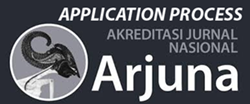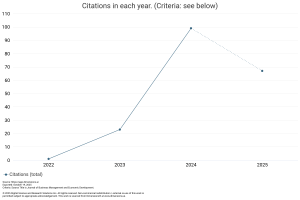Financial Strengthening Strategies in Increasing Company Competitiveness Multinational
DOI:
https://doi.org/10.59653/jbmed.v2i03.938Keywords:
Multinational companies, Financial strategy, Competitiveness, Globalization, Risk managementAbstract
In the era of globalization, multinational companies face complex challenges and opportunities in various jurisdictions. Financial strengthening is a key strategy to increase a company's competitiveness in a dynamic global market. This research examines how efficient financial management, managing foreign exchange risks, optimizing capital structure, and investing in technology can support the stability and growth of multinational companies. Through in-depth literature analysis, this research highlights the importance of integrated and holistic financial strategies to ensure liquidity, reduce risks and maximize profits. With a sustainable and responsible approach, multinational companies can achieve competitive advantage and contribute to inclusive global economic development.
Downloads
References
Bakhri, B. S. (2015). nternational Journal of Islamic Business and Management Review (IJIBR) is published by the. IJBR.
Hasnah, J. (2022). The influence of profitability, leverage, firm size, institutional ownership and dividend policy toward earnings management in mining sector companies listed on the Indonesia Stock Exchange. Universitas Pelita Harapan.
Hendra, H., & Ningrum, L. D. (2024). Pengaruh Globalisasi Terhadap Bisnis Internasional. Innovative: Journal Of Social Science Research, 4(1), 696–707.
Lang, C., Xu, D., Corbet, S., Hu, Y., & Goodell, J. W. (2024). Global financial risk and market connectedness: An empirical analysis of COVOL and major financial markets. International Review of Financial Analysis, 93. https://doi.org/10.1016/j.irfa.2024.103152
Manurung, A., Pardede, J., & Sitorus, R. (2015). Dynamic Interrelationships between Macroeconomic Indicators, Global Stock Market, and Commodities Prices and Jakarta Composite Index(JCI). Jurnal Akuntansi & Manajemen (JAM), 67.
Menne, F., Hasiara, L. O., Setiawan, A., Palisuri, P., Tenrigau, A. M., Waspada, W., Juliana, J., & Nurhilalia, N. (2024). Sharia accounting model in the perspective of financial innovation. In Journal of Open Innovation: Technology, Market, and Complexity (Vol. 10, Issue 1). https://doi.org/10.1016/j.joitmc.2023.100176
Noreen, U. (2020). The estimation of risk management efficiency and its determinants. Jurnal Ekonomi Malaysia, 54(1), 69–79.
Prabowo, S. C. B., & Korsakul, N. (2020). Analysis of financial performance of mining companies listed in indonesia stock exchange. Jurnal Aplikasi Manajemen, 18(1), 28–45.
Puspitaningtyas, Z. (2017). Estimating systematic risk for the best investment decisions on manufacturing company in Indonesia. Investment Management and Financial Innovations, 14(1), 46–54.
Sari, N. D. K. (2021). Firm Value Factors in the Mining Sector in Indonesia Stock Exchange. Sixth Padang International Conference On Economics Education, Economics, Business and Management, Accounting and Entrepreneurship (PICEEBA 2020), 527–532.
Sartono, A. (2010). Financial management theory and applications. Yogyakarta: Bpfe.
Schäfer, D., Stephan, A., & Fuhrmeister, S. (2024). The impact of public procurement on financial barriers to general and green innovation. Small Business Economics, 62(3). https://doi.org/10.1007/s11187-023-00790-2
Sugiyono, P. (2019). Quantitative Qualitative Research Methods and R&D. Bandung: Alfabeta.
Trisnawati, R., Mustikawati, S., & Sasongko, N. (2023). Enterprise risk management disclosure and CEO characteristics: an empirical study of go public companies in Indonesia. Business: Theory and Practice, 24(2), 379–391.
Yanuarsa, M., Wijayanti, D. M., & Haryono, S. (2021). The Influence of Ownership Structure, Debt Structure, and Independent Commissioner on Earning Management. Jurnal Al-Qardh, 6(2), 29–48.
Zuraidah, Z., & Mu’is, A. (2021). Human resources in developing halal industry in the era of industrial revolution 4.0 during the Covid-19 pandemic.
Downloads
Published
How to Cite
Issue
Section
License
Copyright (c) 2024 Fatmawati A Rahman, Masmarulan, Rostini, A Fadel Muhammad, Risna Melati Sukma Bakri

This work is licensed under a Creative Commons Attribution-ShareAlike 4.0 International License.
Authors who publish with this journal agree to the following terms:
- Authors retain copyright and grant the journal right of first publication with the work simultaneously licensed under a Creative Commons Attribution-ShareAlike that allows others to share the work with an acknowledgement of the work's authorship and initial publication in this journal.
- Authors are able to enter into separate, additional contractual arrangements for the non-exclusive distribution of the journal's published version of the work (e.g., post it to an institutional repository or publish it in a book), with an acknowledgement of its initial publication in this journal.
- Authors are permitted and encouraged to post their work online (e.g., in institutional repositories or on their website) prior to and during the submission process, as it can lead to productive exchanges, as well as earlier and greater citation of published work (See The Effect of Open Access).





























